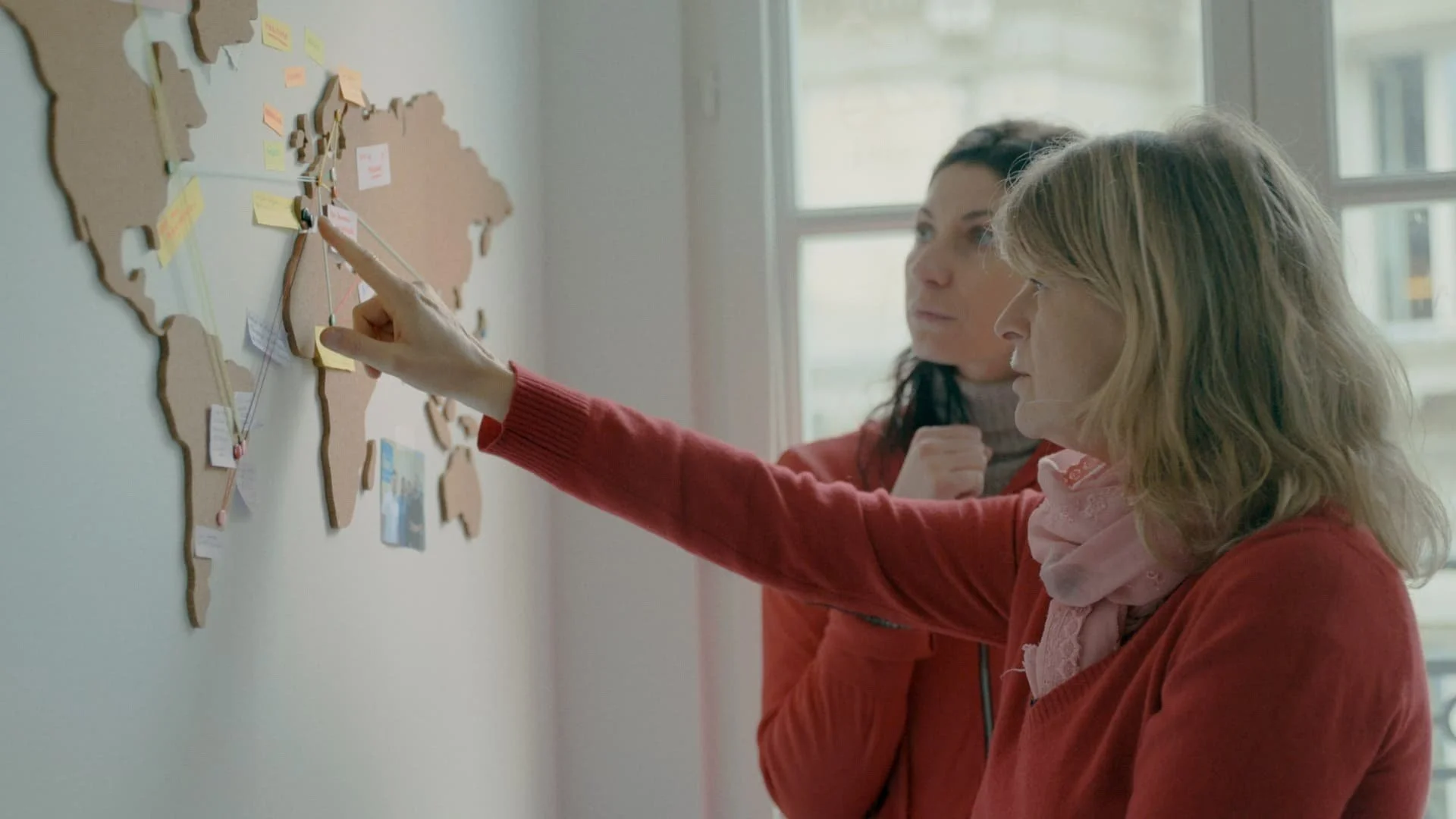The Man with a Thousand Faces
Sonia Kronlund’s intriguing exposé reveals the truth about a man juggling many fictitious identities.
Image courtesy of Sovereign Films.
Early on in this intriguing documentary by the French filmmaker Sonia Kronlund we find a number of women talking about men who have treated them badly. Three names come up – Ricardo, Alexandre and Daniel – and we hear tell of a Brazilian and an Argentinian, of a surgeon and an engineer. But what quickly emerges - and is indeed hinted at in the film’s title - is the fact that, whatever the name, the occupation or the nationality stated, all of them are in actuality the same man. This film follows the efforts of the filmmaker to track him down. It would seem that she has herself encountered worthless men in her time but not anybody who in the process of attracting women would create so many distinct identities for himself. To expose this Ricardo – let's settle for that name – she seeks to record the experiences of some of the women who were tricked into believing his lies hoping in that way to limit his chances of continuing to live in the mode he has adopted. For once a film declares its nature in a written statement at the outset: Kronlund tells us that this is not a journalistic investigation but rather a personal, committed attempt to faithfully relate a five-year story.
The Man with a Thousand Faces opens in Poland, in Kraków, where a private detective named Maciej Zygmunt who has been approached by the filmmaker for this very purpose is seen identifying the property to which he has traced Ricardo. In effect this is a preface foreshadowing later events (we will return to this surveillance later) and what now sets up the story are a series of conversations between Kronlund and four women ready to tell of their involvement with Ricardo and to describe what yarns he told them about his work, his parents and his history. Marianne, Kania, Nicole and Carolina have very different tales to tell since sometimes his mother would be dead and at other times alive, he had a tendency to refer to friends who were in fact imaginary and he would eventually claim to have five children although the only incontestable fact in that connection is that he made Marianne pregnant.
Much of the film takes place in Paris although rather late on it shifts to Brazil to shed light on Ricardo's birthplace and the truth about his mother – of his father we learn that the boy hated him and that when still a youth he created a fresh identity for himself by dressing up as an armed policeman. The scenes set in São Paulo also reveal that it was not just in France and in Poland that Ricardo made overtures to women and spun stories about himself and nor was he above carrying on more than one such relationship at a time. It is an extraordinary story that emerges and as one of the women puts it, she is left torn between anger against him for his deceit and anger at herself for being taken in.
Running for 90 minutes, The Man with a Thousand Faces flows well throughout and is vividly presented. A second opening statement in writing does reveal that in some cases the women who wanted their stories told also desired to be anonymous and they therefore approved of actors representing them. Not being certain which of the people we see are indeed actors could have been a distraction but Kronlund, who appears as herself in the film, takes care not to overdramatise the tale and one can readily believe in its basic authenticity (the only time that one baulks is when life in the French capital is briefly shown in the form of an unannounced clip from the film An American in Paris!).
If men behaving badly is a familiar enough issue, the extent to which Ricardo would build up false versions of himself carries this particular tale into another realm as we ponder the psychology of a man who would continually need to create new versions of himself even matching his manner, be it effervescent or quiet, to fit in with what he thought a particular woman would find appealing. Not surprisingly the film cannot come up with in-depth answers to this but this exposé has sufficient fascination for that not to be essential. Furthermore, Kronlund does finally succeeded in getting Ricardo to give her an interview on camera. To achieve this she has to pretend that he is being filmed in connection with his sporting activities in Poland where he has now taken up residence and has become a runner. Even without the chance to challenge him directly about his past the film does achieve a climax by enabling viewers to see and hear Ricardo for themselves photographed at some length as he talks. He expects admiration for his running activities but Kronlund mocks him with the theme music from Chariots of Fire and the dismissive line “Go on, run, buddy”. She has done all that she could and his story is now out in the open.
Original title: L’homme aux mille visages.
MANSEL STIMPSON
Featuring Sonia Kronlund, Aurélie Gasche, Maria Piotrowska, Valérie Casfinetti, Carolina Veras Ramirez, Bruna Savoy, Neuci Giselda Lopes, Maciej Zygmunt, Sylvia Lucia Marcos, Daphné Juster.
Dir Sonia Kronlund, Pro Elisabeth Perez, Screenplay Sonia Kronlund, Ph Filip Drozdz, Alexander Nandu, Zara Popovici and Julién Poupard, Ed Sophie Brunet.
Chaz Productions/Madants/SKP Productions/Bord Cadre Films/Sovereign Films-Sovereign Films.
90 mins. France/Poland. 2024. UK Rel: 22 November 2024. Cert. 12A.


